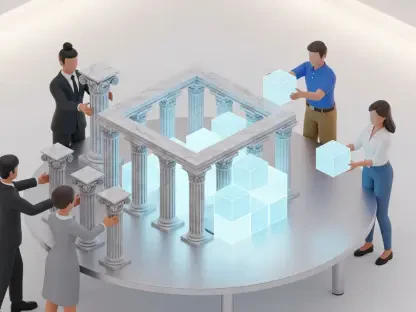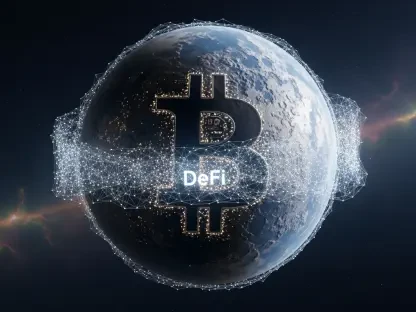In the realm of education, where data integrity and security are paramount, blockchain technology emerges as a potential game-changer. Educational institutions manage vast amounts of sensitive data, ranging from student records and qualifications to certifications and personal information. As cyber threats continue to grow more sophisticated, safeguarding this information necessitates innovative solutions. Blockchain, with its decentralized and cryptographically secure ledger system, presents itself as a promising answer to these challenges. This article delves into the transformative potential of blockchain within the education sector, exploring its applications, benefits, challenges, and considerations.
Blockchain and Data Management
In educational settings, data serves as a vital resource that encompasses a wide array of information, such as student records, qualifications, certifications, and more. With the increasing reliance on digital platforms for education management, the necessity of robust data management solutions has never been more critical. Blockchain offers a compelling approach to data management in education by providing a decentralized and secure ledger system. This technology enables educational institutions to securely manage student records, creating a lifelong, reliable account of educational attainment. Furthermore, the decentralized nature of blockchain implies that data is stored across multiple nodes, reducing the risk of a single point of failure.
The use of blockchain for data management in education provides several benefits. It ensures data integrity by safeguarding records against unauthorized access and tampering. Blockchain’s immutable ledger means that once data is recorded, it cannot be altered, guaranteeing the accuracy and reliability of educational records. Additionally, blockchain technology facilitates easy access to verified qualifications by students, potential employers, and academic institutions. This streamlines the verification process and minimizes fraud, such as diploma mills or falsified credentials.
Security and Trust
A significant advantage of employing blockchain in education is its cryptographic foundation, which enhances security and trust. In a sector where personal and performance data are sensitive, blockchain’s robust security measures provide a “trustless” environment where data integrity is preserved without the need for intermediary trust. This is particularly crucial given the increasing prevalence of cyber threats that target educational data, such as student personal information and research data. Blockchain technology’s decentralized nature reduces the risk of centralized data breaches and ensures the protection of sensitive information.
Trust is also a central theme in blockchain’s application within educational settings. The technology fosters a transparent and trustworthy data management system, enabling stakeholders to engage confidently with educational systems. By leveraging blockchain, educational institutions can deliver secure and tamper-proof records, fostering trust among students, educators, employers, and other stakeholders. Additionally, blockchain’s capability to maintain a transparent record of all transactions and data activities ensures accountability and verifiability, further enhancing trust within the educational ecosystem.
Challenges and Risk Management
Despite the numerous advantages offered by blockchain technology, its implementation within the education sector does not come without challenges. One of the primary hurdles involves handling personal data securely while adhering to prevailing data protection standards and regulations. Educational institutions must navigate the complexities of blockchain deployment, balancing the need for security with compliance with legal and regulatory frameworks concerning data privacy. This requires a thorough understanding of blockchain technology and its implications within the context of the education sector.
Moreover, effective risk management strategies are vital to address cyber threats associated with blockchain implementation. Educational institutions must devise and implement comprehensive risk management frameworks to safeguard blockchain systems against potential vulnerabilities and attacks. This encompasses continuous monitoring for suspicious activities, employing encryption mechanisms, and conducting regular security audits to ensure protection against unauthorized access. By adopting a proactive approach to risk management, educational institutions can mitigate potential threats and drive blockchain adoption securely and effectively.
Current Applications
Blockchain’s versatility and security make it an attractive option for various applications within the education sector. Its current usage extends beyond records management to encompass credential verification, identity and access control, and records integration. Blockchain technology enhances credential verification, allowing educational institutions to issue and verify digital diplomas and certificates securely. This automates the verification process and ensures authenticity, reducing the risk of credential fraud.
Moreover, blockchain serves as a means for identity and access control, ensuring secure access to sensitive data and systems. This is particularly significant given the need for identity management within educational institutions, allowing secure access to applications and services while safeguarding against unauthorized intrusion. Blockchain’s ability to integrate records from disparate systems enhances interoperability and data sharing among educational entities, fostering collaborative efforts and enhancing the efficiency of academic processes.
In addition, the potential use of smart contracts in educational contexts presents another avenue for blockchain application. While still nascent, smart contracts have the potential to automate various administrative tasks within educational systems, streamlining processes such as tuition payments, enrollment management, and faculty contracts. Leveraging smart contracts for these tasks could eliminate manual paperwork and enhance operational efficiency.
Technological Development and Standards
As blockchain technology continues to evolve, educational institutions face the necessity of adapting to technological developments and establishing standards for secure record management. The maturation of coding, deployment, and management of blockchain projects has paved the way for tailored solutions that meet the specific needs of educational environments. Institutions like Hyperledger have played a pivotal role in developing private blockchains for educational use, aiming to enhance security and customization.
Alongside technological development, initiatives to establish standards for securing educational records have gained traction. These standards seek to define best practices for data protection and blockchain deployment, ensuring that educational institutions can effectively leverage blockchain without compromising data privacy and security. By adhering to these standards, educational institutions can facilitate blockchain adoption while maintaining a steadfast commitment to safeguarding sensitive data.
Technological advancements also underscore the need for specialized skills and knowledge to manage blockchain projects effectively. Educators and administrators must acquire proficiency in blockchain technology through professional training and certification programs. Acquiring these skills ensures that they are equipped to navigate the complexities of blockchain systems, integrating them into existing educational frameworks seamlessly.
Legal and Regulatory Considerations
While blockchain-specific regulations are still in development, educational institutions must rely on existing legal frameworks to navigate data privacy and security challenges. Compliance with prevailing data protection laws, such as the General Data Protection Regulation (GDPR) or the Family Educational Rights and Privacy Act (FERPA), is essential as institutions deploy blockchain projects. Adhering to these regulations ensures that student and institutional data are protected from unauthorized access and misuse.
Furthermore, due diligence in procurement, technology assurance, and contracting form an integral part of managing legal and sector-based issues effectively. Educational institutions embarking on blockchain implementation must exercise prudent judgment in evaluating technology providers and contractors, ensuring compliance with regulatory requirements and data protection standards. This necessitates a thorough assessment of blockchain solutions, vendors, and partnerships to uncover potential risks and address them proactively.
Legal considerations also encompass intellectual property rights and data ownership, issues that arise as blockchain systems become more prevalent in educational contexts. Educational institutions must navigate the complexities of determining data ownership and control, particularly concerning student records and intellectual property generated within academic environments. Ensuring compliance with data ownership standards and resolving intellectual property concerns are essential steps in managing legal challenges that accompany blockchain integration.
Overarching Trends and Consensus Viewpoints
There is a growing consensus within the education sector that blockchain technology holds the potential to revolutionize data security and management. By delivering immutable records and secure transactions, blockchain addresses critical needs that traditional data management solutions fail to fulfill adequately. As educational institutions grapple with the challenges posed by data security and integrity, blockchain emerges as an innovative and promising solution.
While the excitement surrounding blockchain adoption is palpable, stakeholders also exercise caution, recognizing the need for a balanced approach to new technology integration. It is vital to ensure that blockchain implementation does not overshadow fundamental practices around data protection, risk management, and compliance. Institutions must prioritize securing educational data and conducting thorough assessments when adopting novel solutions, preventing potential risks and protecting against unauthorized access.
Moreover, as blockchain technology matures within educational settings, a deeper understanding of its capabilities and complexities is necessary. A prudent approach involves assessing blockchain’s potential benefits alongside its challenges, identifying the most suitable applications for secure data management while navigating legal requirements and risk mitigation strategies. Engaging in collaborative efforts with industry experts and professionals can inform institutions about best practices for blockchain deployment.
Conclusion: Navigating Blockchain Integration in Education
In the educational landscape, where the integrity and security of data are crucial, blockchain technology has the potential to be transformative. Educational institutions handle large volumes of sensitive information, from student records to certifications and personal details. As cyber threats become more advanced, protecting this data requires innovative approaches. Blockchain, known for its decentralized and cryptographically secure ledger system, stands out as a promising solution to these issues. By decentralizing data storage and ensuring security through advanced cryptography, blockchain can help prevent unauthorized access and data breaches. Additionally, this technology can facilitate the verification of academic credentials and qualifications, making the process transparent and tamper-proof. However, the integration of blockchain in education is not without challenges. Institutions must consider the technical infrastructure required, as well as the cost and knowledge development necessary for successful implementation. Despite these hurdles, the potential benefits of blockchain, such as enhanced security, data transparency, and streamlined verification processes, make it a compelling consideration for the future of education. As the world continues to advance digitally, embracing such technology could fortify educational institutions against evolving cyber threats while offering robust and secure data management solutions.









